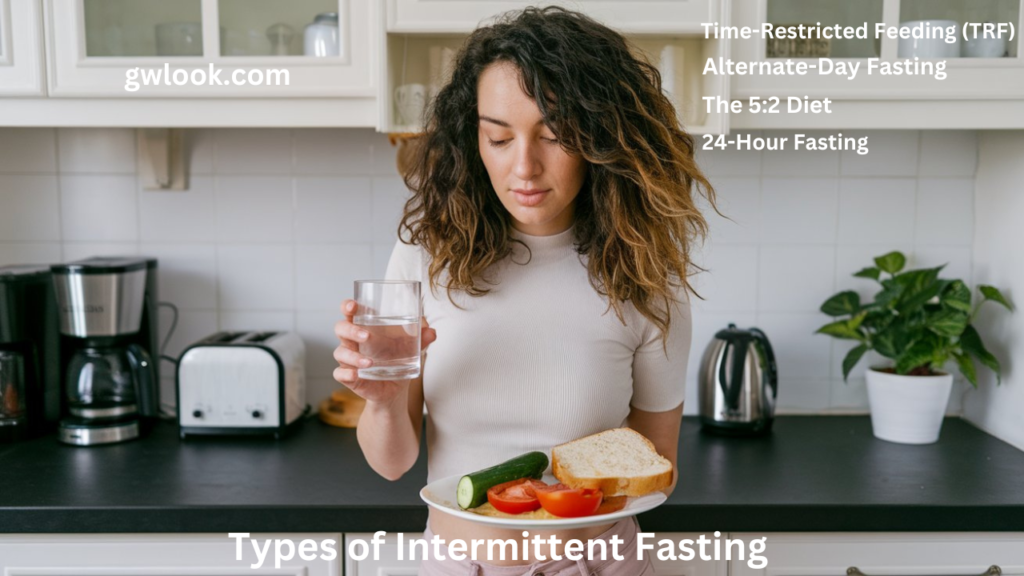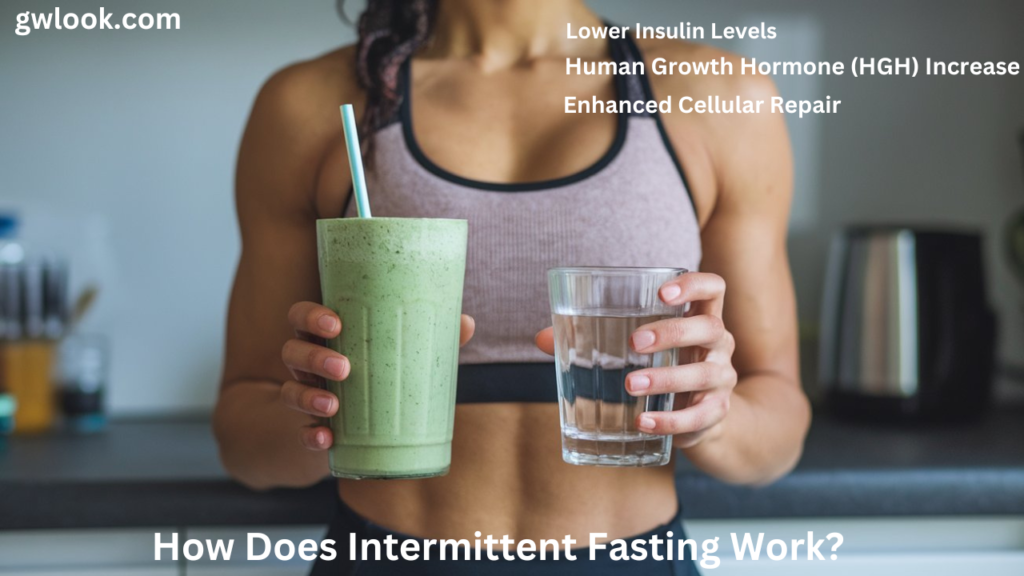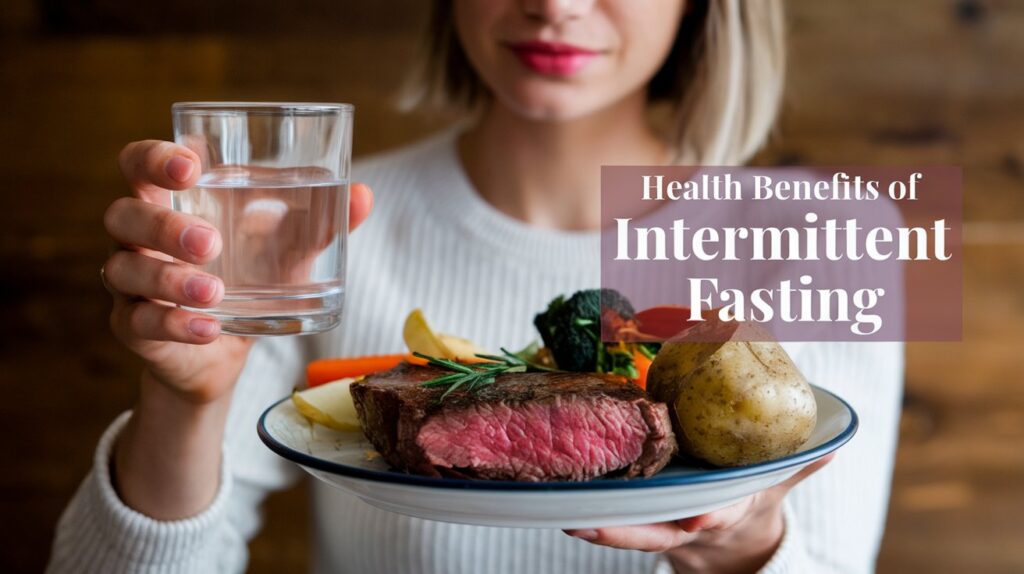Intermittent Fasting has gained popularity as a flexible and practical approach to managing weight and improving health. Unlike traditional diets that emphasize calorie counting or eliminate certain food groups, intermittent Fasting involves alternating between eating and fasting periods. This comprehensive guide delves into intermittent Fasting, the different methods available, the potential health benefits, and the considerations you should consider before starting.
What is Intermittent Fasting?
Intermittent Fasting is a dietary approach that cycles between periods of eating and Fasting. It doesn’t prescribe which foods to eat but focuses on when to eat them. By limiting the hours during which food is consumed, the body is encouraged to utilize stored energy, leading to various health benefits. This eating style can be tailored to fit individual preferences, making it a versatile choice for many people.

Types of Intermittent Fasting
Different methods of intermittent Fasting can suit various lifestyles and goals. Here are the most common types:
- Time-Restricted Feeding (TRF)
- TRF involves restricting eating to a specific time window each day. For instance, a person may eat between 12 PM and 8 PM, fasting for the remaining 16 hours. This approach is known as the 16/8 method and is popular for its simplicity.
- Alternate-Day Fasting
- In this approach, Fasting occurs every other day. On fasting days, calorie intake is drastically reduced, often to about 500 calories or less, while normal eating resumes on non-fasting days.
- The 5:2 Diet
- This method allows normal eating five days a week while limiting calorie consumption to 500-600 calories on the remaining two days. It is a more flexible form of intermittent Fasting and can be suitable for beginners.
- 24-Hour Fasting
- Also known as the “Eat-Stop-Eat” method, this involves fasting for 24 hours once or twice a week. While it can be challenging, some individuals find this approach effective for weight loss and metabolic health.

How Does Intermittent Fasting Work?
During periods of Fasting, several processes occur in the body that contribute to health improvements:
Also Read: Mushroom Coffee: The Next Trendy Drink?
- Lower Insulin Levels
- Fasting allows insulin levels to drop, which aids in fat burning. When insulin levels are low, the body uses stored fat for energy.
- Human Growth Hormone (HGH) Increase
- Levels of HGH can increase significantly, promoting fat loss and muscle gain.
- Enhanced Cellular Repair
- Fasting triggers autophagy, a process where cells remove damaged components and regenerate. This cellular cleansing helps reduce the risk of certain diseases.

Health Benefits of Intermittent Fasting
The advantages of intermittent Fasting extend beyond weight management. Here are some of the critical health benefits backed by research:
- Weight Loss and Fat Reduction
- One of the primary reasons people try intermittent Fasting is for weight loss. By reducing the time available for eating, individuals often consume fewer calories. Additionally, Fasting helps boost metabolism, facilitating the breakdown of fat.
- Improved Insulin Sensitivity
- Intermittent Fasting has been shown to improve insulin sensitivity, allowing the body to regulate blood sugar levels more effectively. This can be particularly beneficial for those with or at risk of type 2 diabetes.
- Reduced Inflammation and Oxidative Stress
- Fasting has been linked to lower levels of inflammation and is associated with numerous chronic diseases. It also reduces oxidative stress, helping to protect cells from damage.
- Enhanced Heart Health
- Intermittent Fasting may support better cardiovascular health by improving factors like blood pressure, cholesterol levels, and inflammatory markers.
- Improved Brain Function
- Some research suggests that intermittent Fasting could enhance cognitive function and memory and even slow the progression of neurological diseases such as Alzheimer’s.
- Increased Longevity
- Animal studies have shown that Fasting can extend lifespan, likely due to its ability to promote cellular repair and reduce inflammation.

Potential Drawbacks and Considerations
While intermittent Fasting has its benefits, it’s essential to be aware of potential challenges and who may not be suitable for this dietary pattern:
- Hunger and Fatigue
- Especially in the initial stages, individuals may experience increased hunger and fatigue. It takes time for the body to adjust to fasting periods.
- Risk of Overeating
- There’s a possibility of overeating during eating windows, which can negate the benefits of intermittent Fasting. Balanced meals can mitigate this risk.
- Not Suitable for Everyone
- Pregnant or breastfeeding women, people with eating disorders, or those with certain medical conditions should consult a healthcare professional before starting intermittent Fasting.
- Possible Nutrient Deficiency
- With proper meal planning, individuals may avoid nutrient deficiencies. Ensuring a balanced diet rich in essential vitamins and minerals is crucial.

Common Myths About Intermittent Fasting
Intermittent Fasting is surrounded by several myths that can deter people from trying it. Let’s debunk a few:
- Myth: Fasting Slows Down Metabolism
- Contrary to popular belief, short-term Fasting can boost metabolism. Long-term calorie restriction, not intermittent Fasting, is more likely to reduce metabolic rate.
- Myth: You Can Eat Anything During Eating Windows
- Although you can enjoy various foods, it’s essential to maintain a nutritious diet to reap the full benefits of intermittent Fasting. Overindulging in unhealthy foods can hinder progress.
- Myth: Fasting Causes Muscle Loss
- With adequate protein intake and resistance training, muscle loss can be minimized. Some people find that Fasting helps them retain lean muscle mass.

Tips for Success with Intermittent Fasting
To maximize the benefits and minimize challenges, consider these tips:
- Start Slowly
- If you’re new to intermittent Fasting, begin with a shorter fasting period, such as 12 hours, and gradually increase the duration.
- Stay Hydrated
- Drink plenty of water during fasting periods. Herbal teas and black coffee are also allowed, as long as they are calorie-free.
- Listen to Your Body
- Pay attention to how you feel. Adjusting your fasting schedule might be necessary if you experience dizziness, fatigue, or other symptoms.
- Focus on Nutrition
- Even though intermittent Fasting does not specify what you should eat, aim for a diet rich in whole foods, lean proteins, healthy fats, and vegetables.

Frequently Asked Questions
Q: Is intermittent Fasting safe for long-term use?
Yes, but following a balanced diet and not overextending fasting periods is essential. Consulting with a healthcare professional ensures you follow a plan suitable for your health needs.
Q: Can intermittent fasting help with stubborn fat areas?
While it’s challenging to target specific fat areas, intermittent Fasting can reduce overall body fat, which may eventually address stubborn areas.
Q: Will I lose muscle if I fast?
With proper protein intake and resistance exercise, muscle loss is unlikely. Intermittent Fasting may even help maintain lean muscle mass.
Final Thoughts on Intermittent Fasting
Intermittent Fasting is a flexible and potentially effective weight loss and health improvement strategy. Its benefits extend beyond the scale, positively influencing metabolism, heart health, brain function, and longevity. However, it’s crucial to approach this dietary method with a balanced mindset, ensuring that you eat nutrient-rich foods and avoid over-restrictive practices. Consulting a healthcare professional before starting any fasting regimen can help ensure it aligns with your needs.


2 thoughts on “Intermittent Fasting: A Complete Guide to Understanding This Dietary Trend”